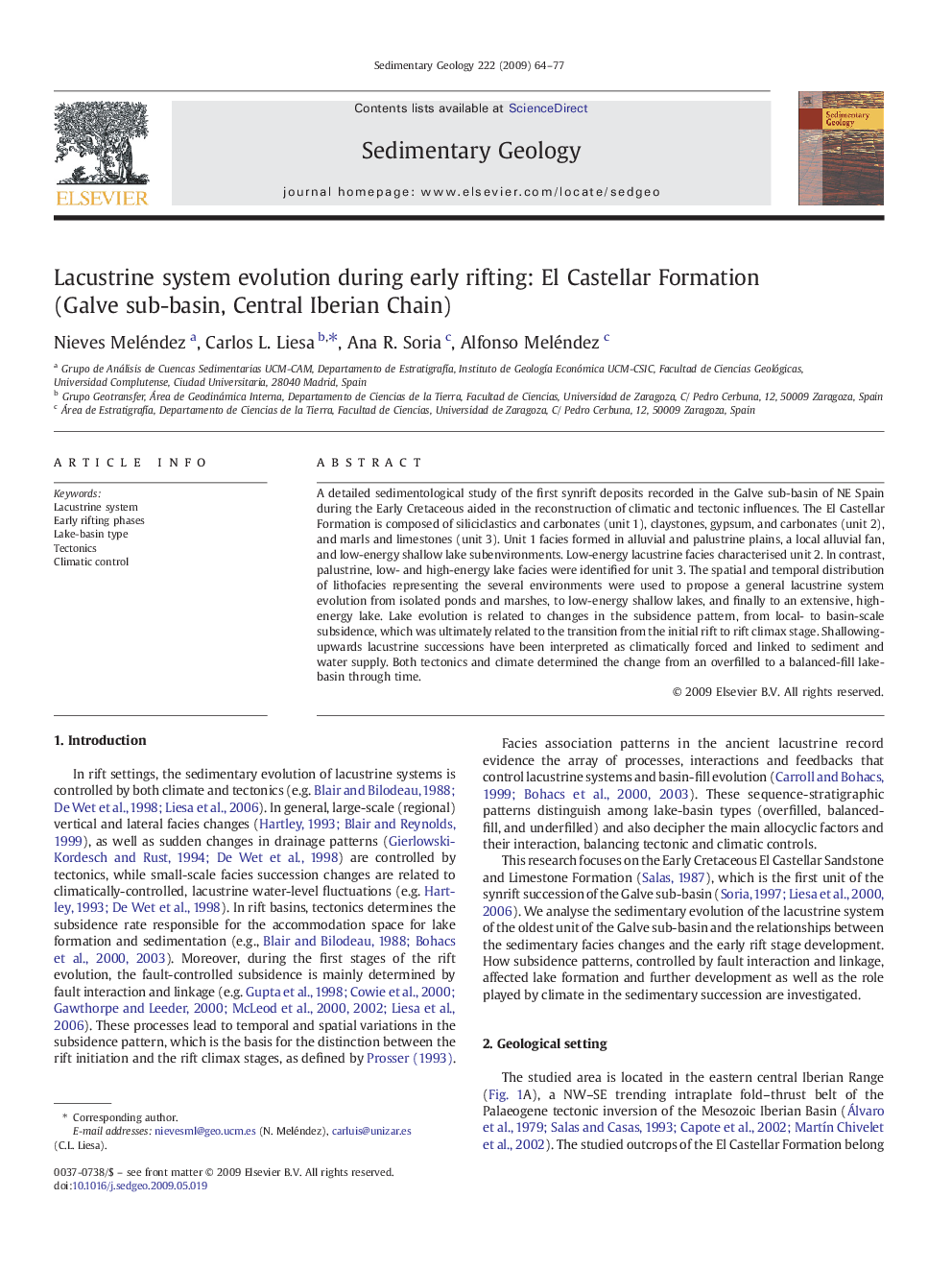| Article ID | Journal | Published Year | Pages | File Type |
|---|---|---|---|---|
| 4690377 | Sedimentary Geology | 2009 | 14 Pages |
A detailed sedimentological study of the first synrift deposits recorded in the Galve sub-basin of NE Spain during the Early Cretaceous aided in the reconstruction of climatic and tectonic influences. The El Castellar Formation is composed of siliciclastics and carbonates (unit 1), claystones, gypsum, and carbonates (unit 2), and marls and limestones (unit 3). Unit 1 facies formed in alluvial and palustrine plains, a local alluvial fan, and low-energy shallow lake subenvironments. Low-energy lacustrine facies characterised unit 2. In contrast, palustrine, low- and high-energy lake facies were identified for unit 3. The spatial and temporal distribution of lithofacies representing the several environments were used to propose a general lacustrine system evolution from isolated ponds and marshes, to low-energy shallow lakes, and finally to an extensive, high-energy lake. Lake evolution is related to changes in the subsidence pattern, from local- to basin-scale subsidence, which was ultimately related to the transition from the initial rift to rift climax stage. Shallowing-upwards lacustrine successions have been interpreted as climatically forced and linked to sediment and water supply. Both tectonics and climate determined the change from an overfilled to a balanced-fill lake-basin through time.
